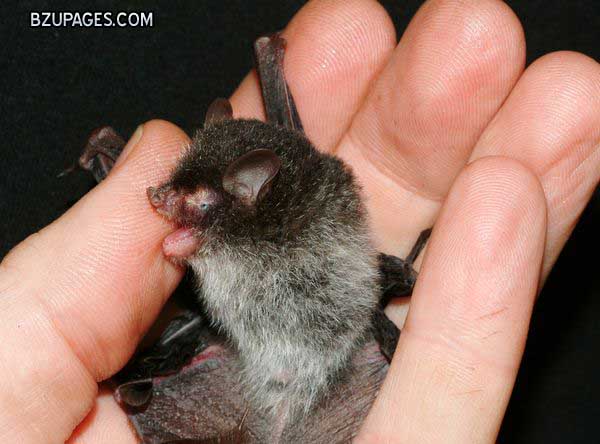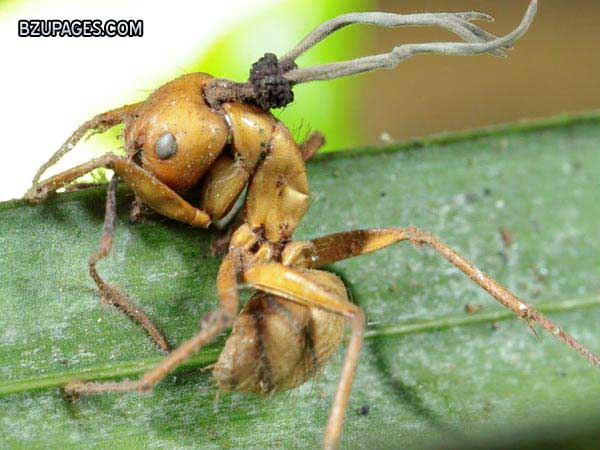 Ten Weirdest Life (Animals) forms of 2011 Ten Weirdest Life (Animals) forms of 2011
Ten Weirdest Life-forms of 2011
Cyclops Shark
 An extremely rare cyclops shark, recently confirmed in Mexico, is an editor's pick for one of the ten oddest life-forms found in 2011. An extremely rare cyclops shark, recently confirmed in Mexico, is an editor's pick for one of the ten oddest life-forms found in 2011.
The 22-inch-long (56-centimeter-long) fetus has a single, functioning eye at the front of its head, scientists announced in October. The eye is a hallmark of a congenital condition called cyclopia, which occurs in several animal species, including humans.
Scientists have documented cyclops shark embryos a few times before, said Jim Gelsleichter, a shark biologist at the University of North Florida in Jacksonville.
The fact that none have been caught outside the womb suggests cyclops sharks don't survive long in the wild.
"Glam Rock" Chameleon
 Speckled with what looks like glam rock makeup, the chameleon Furcifer timoni was recently discovered on the species-rich African island nation of Madagascar, according to a WWF report released in June. Speckled with what looks like glam rock makeup, the chameleon Furcifer timoni was recently discovered on the species-rich African island nation of Madagascar, according to a WWF report released in June.
Finding the colorful new chameleon was "very surprising," since the northern rain forests where it was discovered have been repeatedly and intensively surveyed for reptiles, according to the conservation group.
"Albino" Spider
 Along came an "albino" spider—and it's shocked scientists in Australia, National Geographic News reported in November. Along came an "albino" spider—and it's shocked scientists in Australia, National Geographic News reported in November.
"I nearly fell over when I saw its white head," Mark Harvey, senior curator at the Western Australian Museum, said via email.
The newfound trapdoor spider isn't a true albino, since it still has some pigment—its body is brown, like those of other trapdoor spiders.
But the 1.2-inch-wide (3-centimeter-wide) arachnid has been dubbed the albino trapdoor spider until it's formally described as a new species.
"Demon" Bat
 Meet a new prince of the underworld—the Beelzebub bat. Meet a new prince of the underworld—the Beelzebub bat.
Named for its diabolic coloration, the recently discovered bat has a black head and dark back fur, both of which contrast sharply with the flyer's whitish belly, scientists reported in a September study.
Despite the fiendish name, Beelzebub bats are typically shy creatures, doing their best to avoid humans in their remote rain forest habitat in Vietnam, scientists say.
If captured, however, the bats can turn fierce, said study co-author Neil Furey, a biologist with the conservation group Fauna & Flora International.
"Once in the hand, they will do their best to escape," he said.
"In essence, they exhibit a 'flight' first and 'fight' second response—the latter only when they have no other option."
Mind-Control Fungus
 A stalk of the new fungus species Ophiocordyceps camponoti-balzani grows out of a "zombie" ant's head in a Brazilian rain forest. A stalk of the new fungus species Ophiocordyceps camponoti-balzani grows out of a "zombie" ant's head in a Brazilian rain forest.
Originally thought to be a single species, called Ophiocordyceps unilateralis, the fungus is actually four distinct species—all of which can "mind control" ants, scientists announced in March.The fungus species can infect an ant, take over its brain, and then kill the insect once the fungus moves to an ideal location for growing and spreading its spores.
"Pancake" Sea Slug
 Resembling a colorful pancake, this new nudibranch looks ready for a bizarre brunch.The sea slug is one of the hundreds of potentially new species discovered on a recent expedition to the Philippines, scientists announced in June. Resembling a colorful pancake, this new nudibranch looks ready for a bizarre brunch.The sea slug is one of the hundreds of potentially new species discovered on a recent expedition to the Philippines, scientists announced in June.
Vampire Flying Frog
 The mountain jungles of Vietnam are home to a new breed of "vampire"—a "flying" tree frog dubbed Rhacophorus vampyrus. The mountain jungles of Vietnam are home to a new breed of "vampire"—a "flying" tree frog dubbed Rhacophorus vampyrus.
First found in 2008, the two-inch-long (five-centimeter-long) amphibian is known to live only in southern Vietnamese cloud forests, where it uses webbed fingers and toes to glide from tree to tree, scientists said in January.
Tadpoles normally have mouthparts similar to beaks. Instead, vampire tree frog tadpoles each have a pair of hard black hooks sticking out from the undersides of their mouths—the first time such fangs have been seen in frog tadpoles.
Devil Worm
 A "devil worm" has been found miles under the Earth—the deepest-living animal yet found, according to a study published in June. A "devil worm" has been found miles under the Earth—the deepest-living animal yet found, according to a study published in June.
The discovery of the new nematode species—called Halicephalobus mephisto partly for Mephistopheles, the demon of Faustian legend—suggests there's a rich, largely unknown biosphere beneath our feet, scientists say.
Big-"Lipped" Sea Worm
 Sporting a bright fuchsia hue, this new species of deep-sea acorn worm was recently found some 8,850 feet (2,700 meters) deep near the Mid-Atlantic Ridge. Sporting a bright fuchsia hue, this new species of deep-sea acorn worm was recently found some 8,850 feet (2,700 meters) deep near the Mid-Atlantic Ridge.
The colorful creature has extremely long "lips" that help it snag prey in a place where food is scarce, according to a November study.
"Pink Meanie" Jellyfish
 Off the Florida Keys (map), hundreds of stinging tentacles dangle from a "pink meanie"—a new species of jellyfish with a taste for other jellies that was discovered in January. Off the Florida Keys (map), hundreds of stinging tentacles dangle from a "pink meanie"—a new species of jellyfish with a taste for other jellies that was discovered in January.
Like other species in the genus Drymonema, the new jelly has an appetite for moon jellyfish, which the predators feed on almost exclusively as adults.
Adult Drymonema do the majority of their digestion using specialized "oral arms" that dangle alongside their tentacles. The oral arms exude digestive juices, which break down the prey, scientists said in January.
|